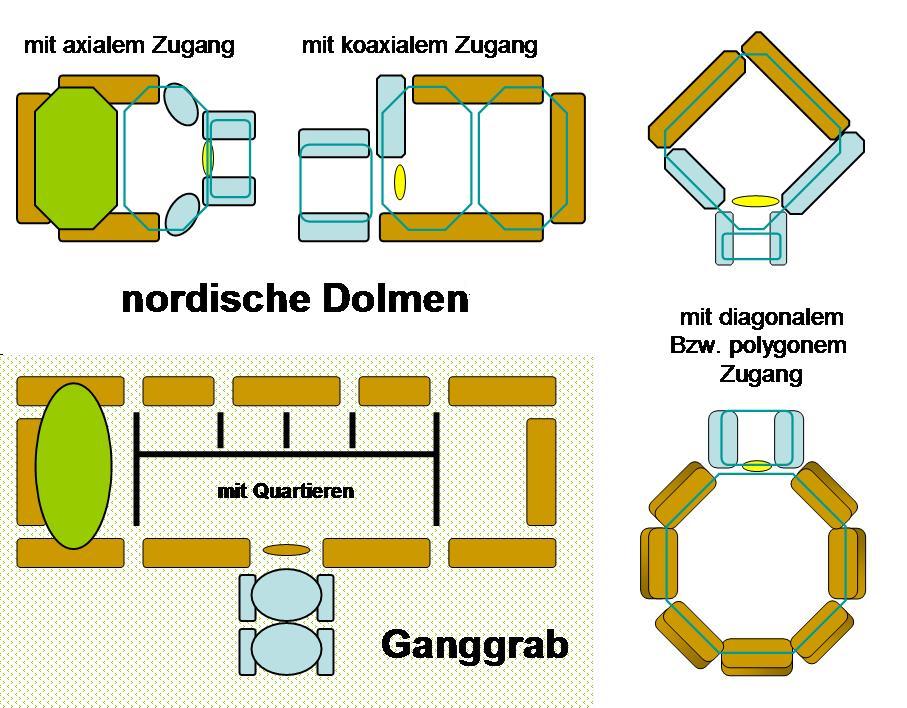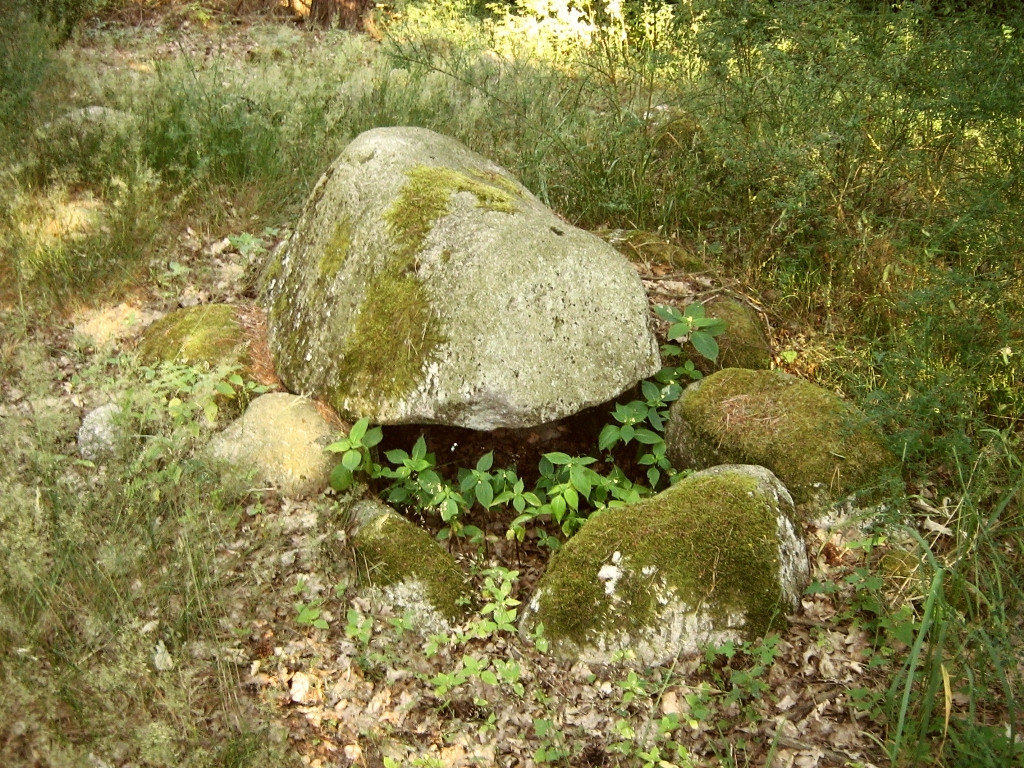|
Megaliths In Mecklenburg-Vorpommern
In the area of present-day Mecklenburg-Vorpommern, Germany, up to 5,000 megalith tombs were erected as burial sites by people of the Neolithic Funnelbeaker (TRB) culture. More than 1,000 of them are preserved today and protected by law. Though varying in style and age, megalith structures are common in Western Europe, with those in Mecklenburg-Vorpommern belonging to the youngest and easternmost—further east, in the modern West Pomeranian Voivodeship of Poland, monuments erected by the TRB people did not include lithic structures, while they do in the south (Brandenburg), west (Lower Saxony and Schleswig-Holstein) and north (Denmark). Though megaliths are distributed throughout the state, their structure differs between regions. Most megaliths are dolmens, often located within a circular or trapezoid frame of singular standing stones. Locally, the dolmens are known as ''Hünengräber'' ("giants' tombs") or ''Großsteingräber'' ("large stone tombs"), their framework is known ... [...More Info...] [...Related Items...] OR: [Wikipedia] [Google] [Baidu] |
Sandstone
Sandstone is a clastic sedimentary rock composed mainly of sand-sized (0.0625 to 2 mm) silicate grains. Sandstones comprise about 20–25% of all sedimentary rocks. Most sandstone is composed of quartz or feldspar (both silicates) because they are the most resistant minerals to weathering processes at the Earth's surface. Like uncemented sand, sandstone may be any color due to impurities within the minerals, but the most common colors are tan, brown, yellow, red, grey, pink, white, and black. Since sandstone beds often form highly visible cliffs and other topographic features, certain colors of sandstone have been strongly identified with certain regions. Rock formations that are primarily composed of sandstone usually allow the percolation of water and other fluids and are porous enough to store large quantities, making them valuable aquifers and petroleum reservoirs. Quartz-bearing sandstone can be changed into quartzite through metamorphism, usually related to ... [...More Info...] [...Related Items...] OR: [Wikipedia] [Google] [Baidu] |
Ernst Sprockhoff
Ernst Sprockhoff (6 August 1892 – 1 October 1967) was a German prehistorian and inventor of the Sprockhoff numbering system for megalithic monuments in Germany. Life Sprockhoff was born on 6 August 1892 in Berlin. He started as a teacher before the first World War. After the war he completed his abitur during his captivity as a prisoner of war and in 1920 started to study prehistory at Friedrich-Wilhelm University in Berlin. He was graduated in 1924 by Max Ebert at the University of Königsberg. From 1926 to 1928 he was employed at the Provincial Museum of Hanover and from 1928 to 1935 at the Römisch-Germanisches Zentralmuseum in Mainz. In 1922 Sprockhoff became a member of the '' Reichsbund für Deutsche Vorgeschichte'', in 1931 an associate member and in 1934 a full member of the German Archaeological Institute. In 1935 he succeeded Gerhard Bersu, who was forced by the Nazi Government to resign his post, as head of the Römisch-Germanische Kommission (Romano-Germanic Commis ... [...More Info...] [...Related Items...] OR: [Wikipedia] [Google] [Baidu] |
East Germany
East Germany, officially the German Democratic Republic (GDR; german: Deutsche Demokratische Republik, , DDR, ), was a country that existed from its creation on 7 October 1949 until its dissolution on 3 October 1990. In these years the state was a part of the Eastern Bloc in the Cold War. Commonly described as a communist state, it described itself as a socialist "workers' and peasants' state".Patrick Major, Jonathan Osmond, ''The Workers' and Peasants' State: Communism and Society in East Germany Under Ulbricht 1945–71'', Manchester University Press, 2002, Its territory was administered and occupied by Soviet forces following the end of World War II—the Soviet occupation zone of the Potsdam Agreement, bounded on the east by the Oder–Neisse line. The Soviet zone surrounded West Berlin but did not include it and West Berlin remained outside the jurisdiction of the GDR. Most scholars and academics describe the GDR as a totalitarian dictatorship. The GDR was establish ... [...More Info...] [...Related Items...] OR: [Wikipedia] [Google] [Baidu] |
Administrative Divisions Of East Germany
The administrative divisions of the German Democratic Republic (commonly referred to as East Germany) were constituted in two different forms during the country's history. The GDR first retained the traditional German division into federated states called ''Länder'', but in 1952 they were replaced with districts called ''Bezirke''. Immediately before German reunification in 1990, the ''Länder'' were restored, but they were not effectively reconstituted until after reunification had completed. Division into ''Länder'' General background In May 1945, following its defeat in World War II, Germany was occupied by the United States, Britain, France and the Soviet Union. All four occupation powers reorganised the territories by recreating the ''Länder'' (states), the constituting parts of federal Germany. The state of Prussia, whose provinces extended to all four zones and covered two thirds of Germany, was abolished in 1947. Special conditions were assigned to Berlin, which t ... [...More Info...] [...Related Items...] OR: [Wikipedia] [Google] [Baidu] |
Neolithic Era
The Neolithic period, or New Stone Age, is an Old World archaeological period and the final division of the Stone Age. It saw the Neolithic Revolution, a wide-ranging set of developments that appear to have arisen independently in several parts of the world. This "Neolithic package" included the History of agriculture, introduction of farming, domestication of animals, and change from a hunter-gatherer lifestyle to one of sedentism, settlement. It began about 12,000 years ago when farming appeared in the Epipalaeolithic Near East, and later in other parts of the world. The Neolithic lasted in the Near East until the transitional period of the Chalcolithic (Copper Age) from about 6,500 years ago (4500 BC), marked by the development of metallurgy, leading up to the Bronze Age and Iron Age. In other places the Neolithic followed the Mesolithic (Middle Stone Age) and then lasted until later. In Ancient Egypt, the Neolithic lasted until the Protodynastic Period of Egypt, Protodynast ... [...More Info...] [...Related Items...] OR: [Wikipedia] [Google] [Baidu] |
Ewald Schuldt
Ewald Adolf Ludwig Wilhelm Schuldt (3 January 1914 – 1 June 1987) was a German prehistorian who carried out significant research into the megaliths of northern Germany. Life Early years Schuldt was born on 3 January 1914 in Mechelsdorf near Rerik and grew up as an only child in simple circumstances. He never got to know his father, an agricultural labourer, because he was killed in 1914 as a soldier in France. The second husband of hs mother was to him an understanding stepfather, who initially wanted to Ewald Schuldt to follow him as a gardener.Klaus-Dieter Gralow (ed.): ''Ewald Schuldt: archäologische Expeditionen im eigenen Land (1950–1984).'' Stock & Stein, Schwerin 2005, p. 317. Significance Ewald Schuldt is one of the best known and most successful Mecklenburg archaeologists. He conducted research of lasting importance, particularly in the field of prehistory and early history. His scientific work built on the research begun in 1835 by G.C.F. Lisch, and continu ... [...More Info...] [...Related Items...] OR: [Wikipedia] [Google] [Baidu] |
Stone Circle
A stone circle is a ring of standing stones. Most are found in Northwestern Europe – especially in Britain, Ireland, and Brittany – and typically date from the Late Neolithic and Early Bronze Age, with most being built from 3000 BC. The best known examples include those at the henge monument at Avebury, the Rollright Stones, and elements within the ring of standing stones at Stonehenge. Scattered examples exist from other parts of Europe. Later, during the Iron Age, stone circles were built in southern Scandinavia. Stone circles are usually grouped in terms of the shape and size of the stones, the span of their radius, and their population within the local area. Although many theories have been advanced to explain their use, usually related to providing a setting for ceremony or ritual, no consensus exists among archaeologists regarding their intended function. Their construction often involved considerable communal effort, including specialist tasks such as planning, quar ... [...More Info...] [...Related Items...] OR: [Wikipedia] [Google] [Baidu] |
Tumulus
A tumulus (plural tumuli) is a mound of earth and stones raised over a grave or graves. Tumuli are also known as barrows, burial mounds or ''kurgans'', and may be found throughout much of the world. A cairn, which is a mound of stones built for various purposes, may also originally have been a tumulus. Tumuli are often categorised according to their external apparent shape. In this respect, a long barrow is a long tumulus, usually constructed on top of several burials, such as passage graves. A round barrow is a round tumulus, also commonly constructed on top of burials. The internal structure and architecture of both long and round barrows has a broad range; the categorization only refers to the external apparent shape. The method of may involve a dolmen, a cist, a mortuary enclosure, a mortuary house, or a chamber tomb. Examples of barrows include Duggleby Howe and Maeshowe. Etymology The word ''tumulus'' is Latin for 'mound' or 'small hill', which is derived from th ... [...More Info...] [...Related Items...] OR: [Wikipedia] [Google] [Baidu] |
Dolmen
A dolmen () or portal tomb is a type of single-chamber megalithic tomb, usually consisting of two or more upright megaliths supporting a large flat horizontal capstone or "table". Most date from the early Neolithic (40003000 BCE) and were sometimes covered with earth or smaller stones to form a tumulus (burial mound). Small pad-stones may be wedged between the cap and supporting stones to achieve a level appearance.Murphy (1997), 43 In many instances, the covering has eroded away, leaving only the stone "skeleton". The Korean Peninsula is home to the world's highest concentration of dolmens,UNESCO World Heritage List. "Gochang, Hwasun and Ganghwa Dolmen Sites." https://whc.unesco.org/en/list/977 including "cemeteries" consisting of 30–100 examples located in close proximity to each other; with over 35,000 dolmens, Korea alone (for unknown reasons) accounts for approximately 40% of the global total. History It remains unclear when, why and by whom the earliest dolmens were mad ... [...More Info...] [...Related Items...] OR: [Wikipedia] [Google] [Baidu] |
Nobbin
Nobbin is a village in the municipality of Putgarten on the Wittow peninsula on the German Baltic Sea The Baltic Sea is an arm of the Atlantic Ocean that is enclosed by Denmark, Estonia, Finland, Germany, Latvia, Lithuania, Poland, Russia, Sweden and the North and Central European Plain. The sea stretches from 53°N to 66°N latitude and from ... island of Rügen. The village, comprising just a few houses, lies between the road from Altenkirchen (Rügen), Altenkirchen to Cape Arkona, Arkona and the bay of Tromper Wiek. As a result of its attractive location between Cape Arkona and the broad, over 10 km long beach of the Schaabe, the village is dominated by tourism (B&Bs and holiday apartments). Riesenberg barrow Nobbin is best known for the megalithic tomb known as the ''Riesenberg'' (also ''Großsteingrab Riesenberg''). The tomb was constructed of glacial erratic boulders and dates back to the New Stone Age in Rügen. It is one of the largest stone graves in North ... [...More Info...] [...Related Items...] OR: [Wikipedia] [Google] [Baidu] |

Saunders_Quarry-1.jpg)



.jpg)

